Airborne particle counters (APCs) come in three main types — handheld, portable, and fixed-point remote — and each is tailored for a specific monitoring need in controlled environments. Choosing the right type is crucial for effective contamination control in industries like pharmaceuticals, semiconductors, and healthcare.
Handhelds are compact and ideal for spot checks and routine assessments, offering flexibility for quick inspections in hard-to-reach areas.
While Portable models provide higher sampling throughput and are commonly used for cleanroom certification and process validation – often featuring advanced data logging and connectivity.
Fixed-point Remote particle counters are designed for continuous, real-time monitoring and are permanently installed to provide automated data streams to centralized systems.
Explore the details, as well as the advantages and limitations of each type of APC.
Handheld particle counters are compact, lightweight devices designed for spot checks and localized air quality assessments.
With low flow rates (typically around 0.1 CFM or 2.83 LPM), they are ideal for quick inspections, troubleshooting, and indoor air quality (IAQ) investigations. Their portability and ease of use make them a popular choice for facilities that require flexibility and rapid deployment.
Handheld APCs are best suited for routine spot checks, HVAC system assessments, and environments where mobility is a priority.
Portable particle counters are larger than handheld models but remain mobile and self-contained. They feature higher flow rates — standard models operate at 1.0 CFM (28.3 LPM), while high-flow models can exceed 50 LPM — making them suitable for cleanroom certification, process monitoring, and rapid sampling of large air volumes.
Portable APCs are ideal for cleanroom certification, filter testing, and environments where both mobility and high sampling throughput are required.
Fixed-point remote particle counters are designed for permanent installation in critical locations within cleanrooms or production areas. These compact sensors continuously monitor particle levels and transmit data to a central facility monitoring system (FMS) or building management system (BMS).
Remote APCs are essential for pharmaceutical manufacturing, semiconductor fabrication, and any application where uninterrupted, automated monitoring is critical for compliance and product safety.
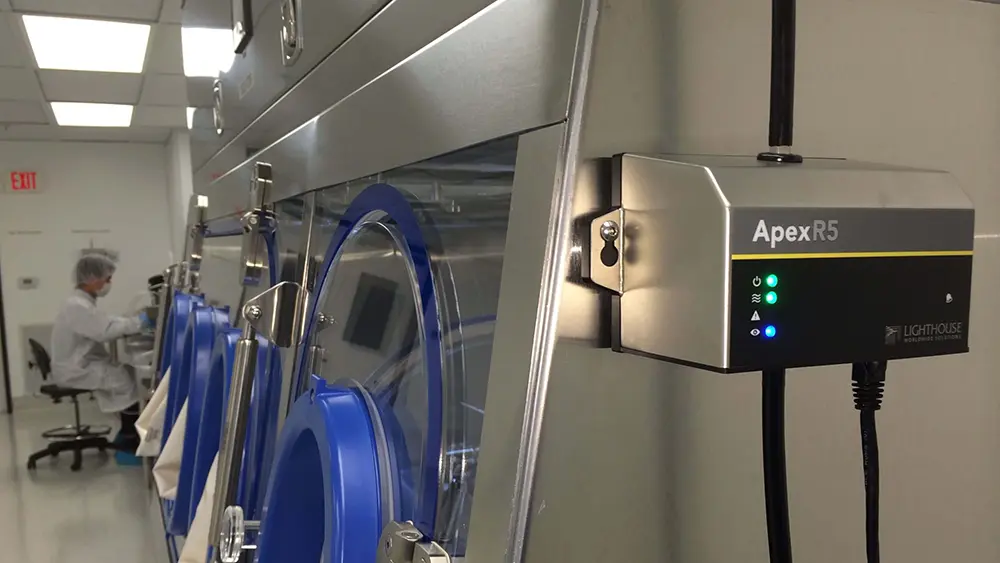
Airborne particle counters are engineered with a suite of advanced features that ensure precise, reliable, and actionable data for contamination control in critical environments. The following key features distinguish modern particle counters and directly impact their effectiveness, usability, and compliance with industry standards.
Particle counters can detect and size particles as small as 0.1 µm, with many models offering multiple user-selectable size channels (commonly 3 to 6 or more), allowing simultaneous monitoring of a range of particle sizes relevant to cleanroom and industrial standards.
Factory calibration at specific size thresholds (e.g., 0.3, 0.5, 5.0 µm) ensures accuracy and repeatability, with some instruments allowing custom channel configuration for specialized applications.
Real-time data display and logging enable immediate detection of contamination events, supporting proactive contamination control and rapid response to excursions.
Data can be viewed in various formats, including tabular, graphical, and trend charts, enhancing the ability to spot patterns and sources of contamination.
Many counters provide both cumulative and differential counts, as well as mass concentration estimates (µg/m³), for comprehensive air quality assessment.
Modern counters feature intuitive, icon-driven color touchscreens, making configuration, navigation, and data review straightforward—even during active sampling.
Large internal memory (e.g., up to 45,000 sample records and 1,000 sample locations) allows for extensive data storage, while USB, Ethernet, and wireless connectivity options facilitate easy data export and integration with facility monitoring systems.
Remote access and diagnostics enable technical support and software updates without removing the instrument from service, minimizing downtime.
Many particle counters include built-in or optional sensors for temperature and relative humidity, providing a more complete picture of environmental conditions and supporting correlation with particle data.
This integration is especially valuable for pharmaceutical, healthcare, and electronics applications, where environmental factors can influence contamination risk.
Compliance with international standards such as ISO 21501-4, ISO 14644-1, and JIS B9921 is standard, ensuring traceable, audit-ready results for regulated industries.
NIST-traceable calibration and recommended annual recalibration maintain measurement accuracy and regulatory compliance.
Counters offer a range of sampling modes, including automatic, manual, real-time meter, cumulative/differential, and mass concentration, to suit diverse monitoring needs.
Adjustable sample times (from 1 second to 99 hours) and programmable alarms for particle counts, flow, and environmental parameters enhance operational flexibility and safety.
Lightweight, high-impact enclosures and ergonomic designs support one-handed operation and easy transport, while internal HEPA-filtered exhaust systems prevent recontamination of the environment.
Long battery life (often exceeding 10 hours) and power conservation modes ensure reliable performance during extended field use.
Modern particle counters are designed for seamless integration with building automation and environmental monitoring systems via multiple communication protocols (USB, Ethernet, Wi-Fi, RS-232/485, Modbus).
This connectivity supports centralized data management, real-time alerts, and comprehensive reporting for compliance and process optimization.
| Feature | Benefit |
|---|---|
| Multi-channel sizing | Simultaneous monitoring of multiple particle sizes for comprehensive contamination control |
| Real-time monitoring | Immediate detection and response to contamination events |
| Advanced user interface | Intuitive operation, easy data review, and configuration |
| Environmental sensors | Integrated temperature and humidity monitoring for holistic environmental assessment |
| Compliance and calibration | Audit-ready results and traceable accuracy for regulated industries |
| Flexible sampling modes | Adaptable to various monitoring scenarios and requirements |
| Robust construction | Durability and portability for field and cleanroom use |
| System integration | Seamless data export and facility-wide monitoring |
These features collectively ensure that airborne particle counters deliver the accuracy, reliability, and compliance required for modern contamination control in cleanrooms, pharmaceutical manufacturing, healthcare, electronics, and beyond.
Data integrity is the cornerstone of contamination control in regulated industries, ensuring that particle count information is accurate, complete, and traceable throughout its lifecycle. For pharmaceutical manufacturing, semiconductor fabrication, and healthcare applications, robust data management isn’t just a best practice — it’s a regulatory necessity.
Airborne particle counters must adhere to stringent global standards, including:
Non-compliance risks costly regulatory actions, product recalls, or facility shutdowns.
| Practice | Implementation Example | Regulatory Alignment |
|---|---|---|
| Periodic Audit Reviews | Quarterly data backups with checksum verification | FDA 21 CFR Part 11 |
| Calibration Tracking | Automated reminders for ISO 21501-4 recalibration | EU GMP Annex 1 |
| Environmental Correlation | Sync particle counts with temp/humidity logs | ISO 14644-1 |
| Root Cause Analysis Tools | Trend graphs pinpointing contamination sources |
1. Secure Data Collection & Storage
2. Compliance-Built Functionality
3. Reporting & Traceability
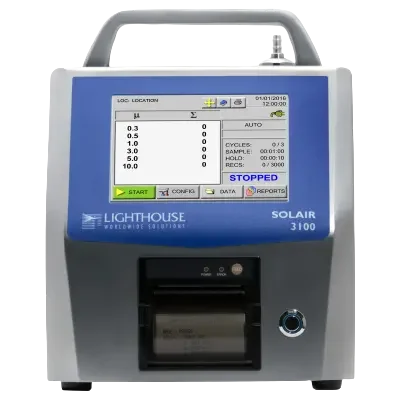
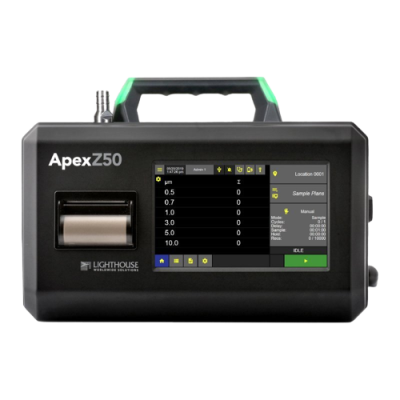
Lighthouse’s Solair 3100 and ApexZ series particle counters include built-in features to streamline compliance:
For industries where data reliability is non-negotiable, modern airborne particle counters combine advanced monitoring with ironclad data governance — turning regulatory obligations into actionable insights for contamination control.
| Factor | Technical Details | Applications Impacted |
|---|---|---|
| Particle Size Range | Detection capability from 0.1 µm (nanoparticles) to 100 µm (larger debris) | Pharma (0.1–5 µm), Semiconductor (0.05–1 µm), Battery Manufacturing (0.3–10 µm) |
| Flow Rate | 1.0 CFM (28.3 LPM) for routine checks; 50–100 LPM for rapid certification | Cleanroom certification, high-volume monitoring |
| Portability | Handheld (0.1 CFM) vs. portable (28.3–100 LPM) vs. remote (fixed installation) | Spot checks (handheld), continuous monitoring (remote) |
| Data Integrity | 21 CFR Part 11 compliance, audit trails, and encryption | GMP facilities, FDA-regulated environments |
| Environmental Fit | VHP compatibility, HEPA-filtered exhaust, chemical resistance | Isolators, bio-decontamination zones |
Selecting the ideal airborne particle counter (APC) requires a careful balance of technical specifications, regulatory requirements, and operational needs. The process involves evaluating a range of critical factors to ensure optimal performance and compliance in environments where air cleanliness is non-negotiable. Below is a detailed breakdown of critical factors to optimize performance and compliance in contamination-sensitive environments.
If you’re considering implementing an entire environmental monitoring system, we suggest you read over our EM Systems Application page.
Where VsVs = sample volume (liters) and CnmCnm = ISO class limit (particles/m³).
Look for:
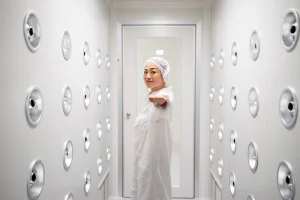
Lets talk about the importance of EM Systems. Thinking about setting up a new cleanroom? You already know the stakes — precision, compliance, and uptime are non-negotiable. Today’s cleanroom environments, whether for pharma, biotech, or advanced electronics, demand more than just filtered air and strict gowning. They require a monitoring system that keeps pace with your operations and regulatory requirements.
Which one is right for your facility?
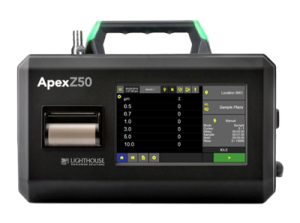
ApexZ offers precision, portability and advanced data tools.

ApexP boasts reliable results in a lightweight portable.
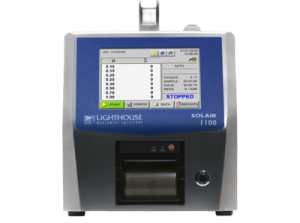
Solair's advanced UI simplifies complex air quality analysis.

HandHeld counters redefine portability and cleanroom compliance.
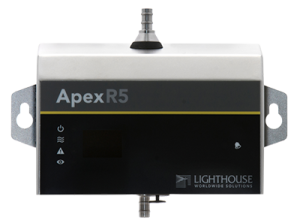
ApexR's self-diagnostics ensure reliable remote counting.

ApexRp delivers uncompromising accuracy with built-in pump.
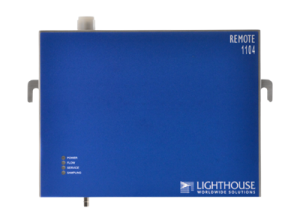
LWS Remotes streamline facility-wide contamination control.
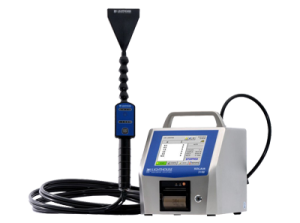
ScanAir provides advanced HEPA / ULPA filter scanning technology.